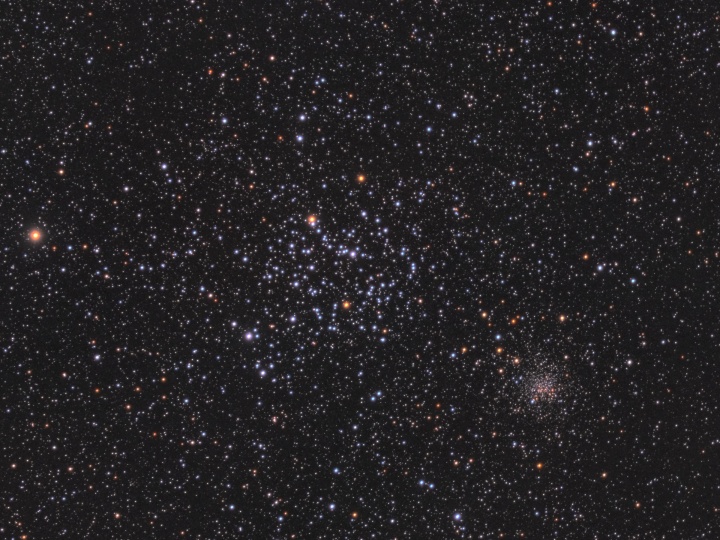Double cluster fun: this image contains both the open cluster M35 (center) and open cluster NGC 2158 (lower right). M35 is a fairly young cluster and contains several prominent red giants along many bright blue stars. The compact open cluster NGC 2158 is much older and contains mostly yellow stars. It also lies at a much larger distance from Earth than M35 and thus appears smaller. The rest of the frame is filled with thousands of other stars because we are looking into the plane of the Milky Way.

Dates: 5 February 2018, 7 February 2018
Telescope: Teleskop-Service 80/480 triplet with 2″ TS 0.79X reducer/flattener and Baader 2″ UV/IR filter
Camera: ZWO ASI1600MM-C with EFW-8 and ZWO 31mm filters
Mount: Skywatcher EQ5 Pro
Exposure: 2.4 hours
L: 227 x 30 sec (gain: 74, bin 1×1, -15C)
RGB: 11/9/12 x 60 sec (gain: 74, bin 1×1, -15C)
Software: APT, PHD2, EQMOD, PixInsight
Lately, I’ve been experimenting with LRGB. This technique is based on the notion that the human vision is much more sensitive to variations on light intensity (luminance) than to variations in color (RGB).
With the LRGB technique, it is common to dedicate most of the exposure time to luminance frames, while much less time through RGB filters is needed to obtain convincing color.
In order to capture the dimmer stars of NGC 2158 with my 80 mm telescope, I needed two hours of exposure through the luminance filter. Each color channel in my image was only exposed for 10 minutes.
This color data is often blurred along with strong noise reduction, to reduce the color noise after LRGB combination. This also means that the colors in an LRGB image are not really accurate, but we just don’t see it very easily.

